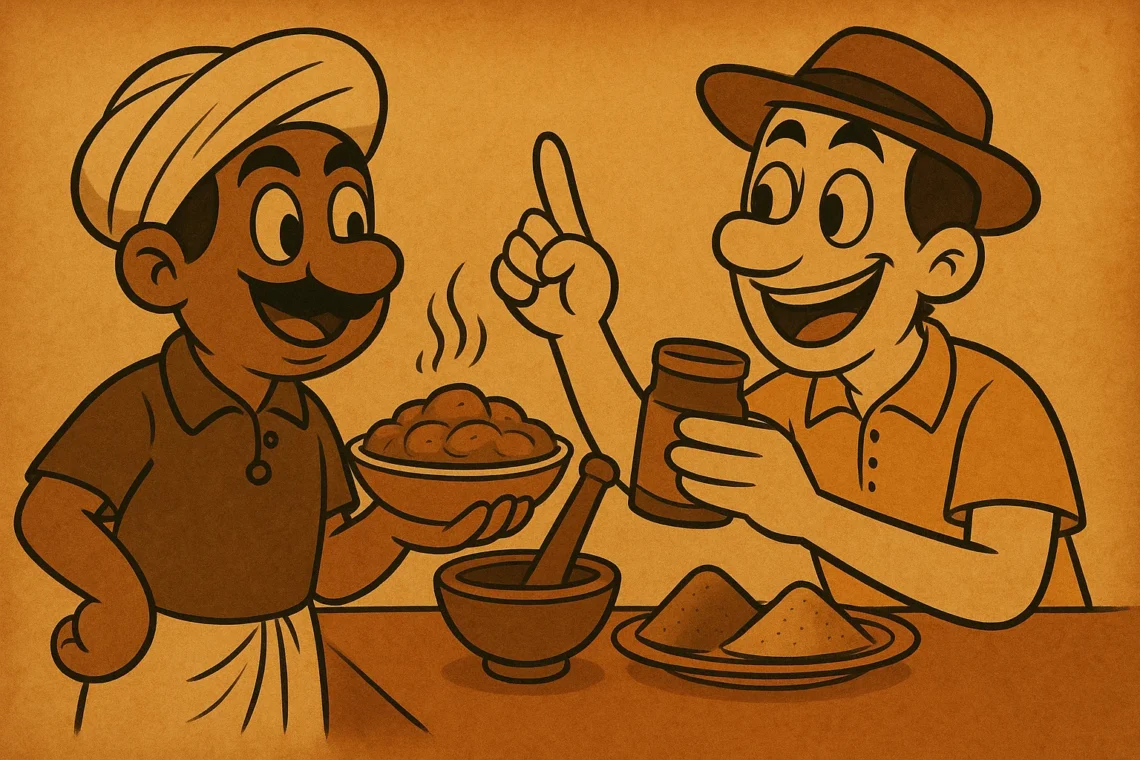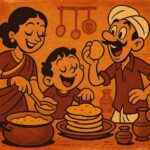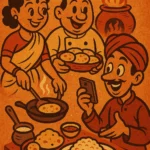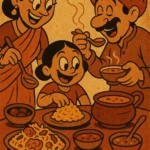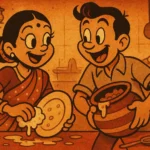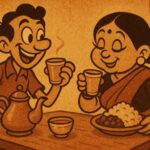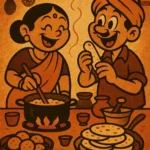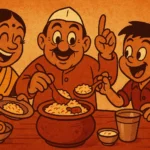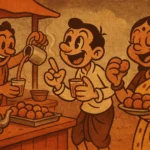When I first moved to Austin from Mumbai, I thought I had a pretty good handle on American food culture. Burgers, pizzas, steaks—easy, right? But what threw me off in the beginning was how people here talked about Indian food. I had a roommate at the time, a well-meaning guy from Texas, who had the absolute best intentions when it came to cooking me an “authentic” Indian dinner. One evening, he proudly presented me with his version of chicken curry. It was all ready, simmering away, and as he put the dish on the table, he said, “I think I nailed it with this curry powder. It’s the key to authentic flavor, right?”
Now, at that moment, I wanted to give him a hug. He was trying, after all, and his enthusiasm was infectious. But I couldn’t help but laugh, a little bitterly, as I realized something profound. My roommate had spent a small fortune on a jar labeled “Curry Powder,” convinced that this was the holy grail of Indian cooking. As much as I appreciated the effort, there was one big problem: curry powder doesn’t exist in India. I had to explain it to him, and trust me, it was an interesting conversation. But I also realized that this moment, as innocent and funny as it was, was a perfect example of how global perceptions of Indian food have been shaped by oversimplified supermarket labels. So, let me take you through what I told my roommate, and maybe it will help you understand the myths surrounding one of the world’s most misunderstood cuisines.
The “Curry” Misconception
First of all, let’s tackle the word “curry.” In India, curry is not a specific dish. It’s a catch-all term that Westerners often use to describe any type of stew or sauce with meat, vegetables, or lentils. But in India, we don’t call it “curry”—we have specific names for each dish. For example, butter chicken, chole, dal tadka, saag—each has its own unique preparation and flavor profile. To us, curry is just a lazy umbrella term, much like calling all Italian dishes “pasta” or all American dishes “burgers.” It’s inaccurate, but it’s stuck because it’s simple. It’s easy. And it sells.
When I explained this to my roommate, he was clearly puzzled. “So you’re telling me,” he said, “that the term ‘curry’ is just some made-up word we Westerners use to cover everything Indian?” Yes, I told him, but it’s more complicated than that. The use of the word “curry” by the British during their colonial rule in India helped cement the global perception that “curry” is an Indian dish, but it’s really a combination of different regional foods and flavors. There’s no singular “curry”—just a rich mosaic of regional cooking traditions that vary dramatically from place to place.
The Curry Powder Myth
Now, let’s talk about curry powder. My roommate’s jar had a beautiful, colorful label that promised “authentic Indian flavor.” But here’s the catch—curry powder, as we know it in Western supermarkets, isn’t something we use in India. What’s sold as “curry powder” in the West is a blend of spices like turmeric, coriander, cumin, and chili powder. And while these spices do feature heavily in Indian cooking, they are not used in the same pre-packaged mix that you might find in your local grocery store. Every family, every region, and every dish in India uses a different combination of spices, prepared fresh each time. There is no “one-size-fits-all” spice blend called curry powder.
In India, we have masala, which means “spices” in Hindi. These are often mixed and ground fresh to suit the dish at hand. For example, a garam masala (a warm, aromatic blend of spices) might contain cardamom, cinnamon, cloves, cumin, and coriander. But you wouldn’t find a standard, pre-made masala in every Indian kitchen. The idea of having a store-bought blend labeled “curry powder” is, well, quite foreign to us. And yet, it’s marketed everywhere as an essential component of “Indian cooking,” which is far from the truth.
Why This Oversimplification Happens
It’s easy to see how the myth of curry powder came about. As the British colonized India, they were introduced to a variety of spices and flavors, but they needed a way to make them more palatable to the British palate. So, they took the most prominent spices they encountered and created a pre-blended powder they could easily use. Over time, as Indian food gained popularity worldwide, this idea of a ready-made curry powder took root in the collective global consciousness. In supermarkets across the world, curry powder became the shorthand for “Indian food,” and we were sold the idea that a little jar of yellow powder could recreate the complexity of Indian cooking in a minute. The problem, of course, is that it’s not that simple.
The Diversity of Indian Cuisine
Indian cuisine is as diverse as the country itself, with thousands of distinct regional dishes. From the rich, spicy curries of the South to the milder, dairy-based gravies of the North, no two Indian dishes are exactly alike. Each region has its own unique set of spices, herbs, and cooking techniques that have evolved over centuries. For instance, the curries you might find in coastal regions like Goa feature coconut milk and seafood, while the North is known for its tandoori dishes, rich in yogurt and grilled meats. The idea that you can condense all of that into a single “curry powder” is not just oversimplified, it’s downright misleading.
So, I told my roommate: if you really want to cook “authentic” Indian food, throw out the curry powder and start experimenting with the many individual spices that make up Indian cuisine. Buy whole spices, toast them, and grind them fresh to create your own spice blends. Or, better yet, learn how to make your own garam masala, which is as individual as the cook making it. It’s about understanding the ingredients, the history, and the traditions behind the food. The beauty of Indian food lies not in one pre-made jar of curry powder, but in the infinite combinations of spices that come together to create something magical on the plate.
It’s Not Just Spice — It’s Story
Now, don’t get me wrong, I have nothing against convenience or store-bought products. Curry powder can still add flavor to dishes, and I’ve used it in a pinch. But when it comes to understanding the richness and diversity of Indian food, we have to move beyond the myths. Indian food is far too varied and nuanced to be summed up in a single jar. It’s a reflection of a culture that values diversity, tradition, and the art of cooking. So, the next time someone offers you a dish with “curry powder,” maybe pause for a second and think about what’s really in that little jar. And when you’re cooking your next Indian meal, consider the story behind the spices, the history they carry, and the endless possibilities they offer.
Born in Mumbai, now stir-frying feelings in Texas. Writes about food, memory, and the messy magic in between — mostly to stay hungry, sometimes just to stay sane.

